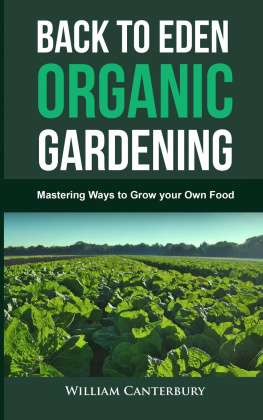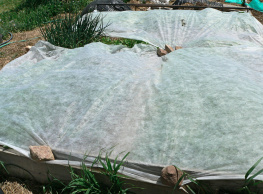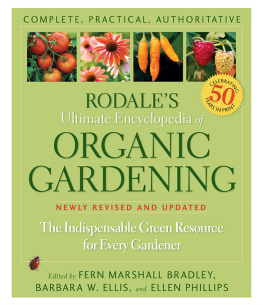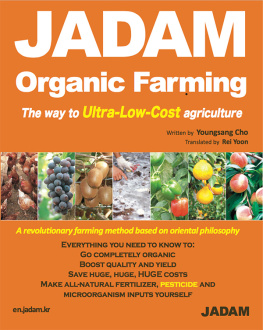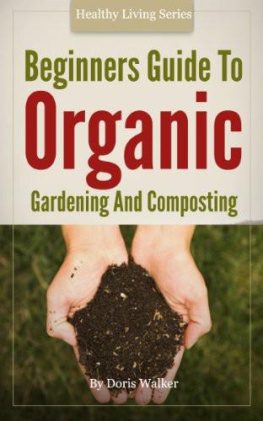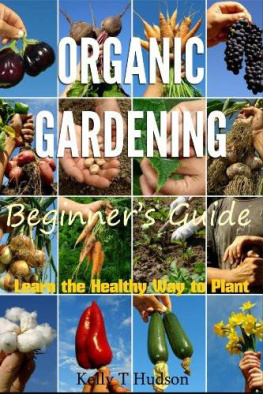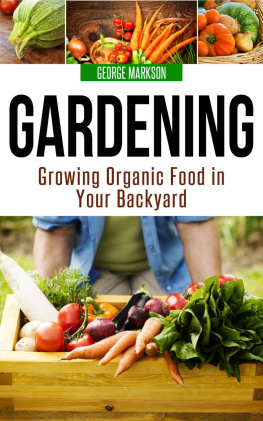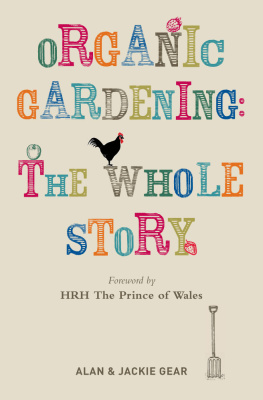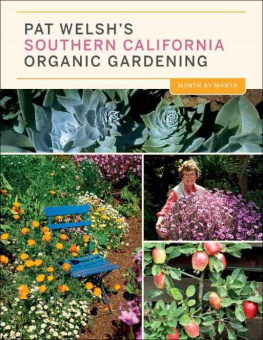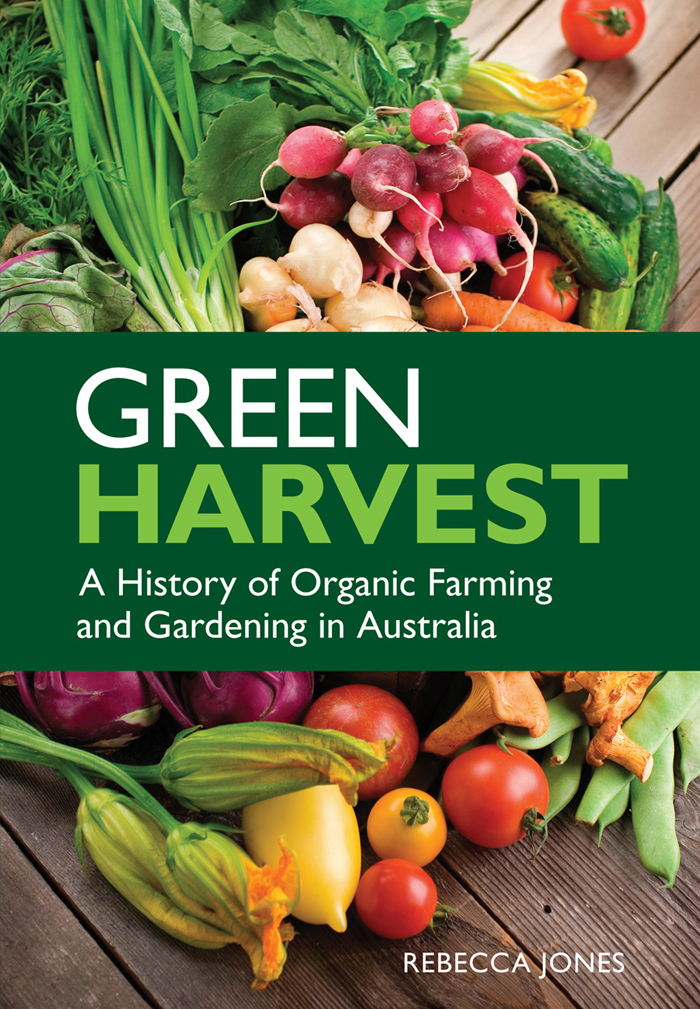GREEN
HARVEST
A History of Organic Farming
and Gardening in Australia
REBECCA JONES
Rebecca Jones 2010
All rights reserved. Except under the conditions described in the Australian Copyright Act 1968 and subsequent amendments, no part of this publication may be reproduced, stored in a retrieval system or transmitted in any form or by any means, electronic, mechanical, photocopying, recording, duplicating or otherwise, without the prior permission of the copyright owner. Contact CSIRO PUBLISHING for all permission requests.
National Library of Australia Cataloguing-in-Publication entry
Jones, Rebecca, 1967
Green harvest: a history of organic farming and gardening in Australia/by Rebecca Jones.
9780643098374 (pbk.)
Includes bibliographical references and index.
Organic gardening Australia History.
Organic farming Australia History.
631.584
Published by
CSIRO PUBLISHING
150 Oxford Street (PO Box 1139)
Collingwood VIC 3066
Australia
Telephone: | +61 3 9662 7666 |
Local call: | 1300 788 000 (Australia only) |
Fax: | +61 3 9662 7555 |
Email: | publishing.sales@csiro.au |
Web site: | www.publish.csiro.au |
Cover image by iStockphoto
Set in Adobe Minion Pro 11/13.5 and Adobe Helvetica Neue
Edited by Anne Findlay
Cover and text design by James Kelly
Typeset by Desktop Concepts Pty Ltd, Melbourne
Index by Russell Brooks
Printed in China by 1010 Printing International Ltd
CSIRO PUBLISHING publishes and distributes scientific, technical and health science books, magazines and journals from Australia to a worldwide audience and conducts these activities autonomously from the research activities of the Commonwealth Scientific and Industrial Research Organisation (CSIRO).
The views expressed in this publication are those of the author and do not necessarily represent those of, and should not be attributed to, the publisher or CSIRO.
The paper this book is printed on is certified by the Forest Stewardship Council (FSC) 1996 FSC A.C. The FSC promotes environmentally responsible, socially beneficial and economically viable management of the worlds forests.
Contents
Acknowledgements
There are many people I wish to thank who have assisted me in the research and writing of Green Harvest. I am grateful to all the people who participated in interviews for this study and who so generously and cheerfully shared their time, stories, beliefs and experiences with me.
I would particularly like to thank: Janice Chesters who conscientiously supervised the research and writing of this book as a PhD thesis at Monash University, brought different insights to my historical analysis, and from the outset shared my vision. Sue Whyte offered thoughtful and practical advice and shared with me an enthusiasm for organic farming and gardening and an interest in different approaches to the world.
I would also like to thank Anna Jones, Meredith Fletcher, Ted Hamilton and staff of CSIRO Publishing, Libby Robin, John Waller, Tom Griffiths, Tom Stannage, Gary Presland, Margaret Jones and Ivor Jones, and staff of Monash University Department of Rural and Indigenous Health.
I am grateful for financial assistance received from the Commonwealth Government Australian Postgraduate Award, the School of Rural Health Higher Degree Student Support Scheme, Faculty of Medicine, Nursing and Health Science Publication Grant and Department of Rural and Indigenous Health Publication Grant, without which this history would be much more limited in scope and geography.
Staff from the State Libraries of Victoria, South Australia, Queensland and Tasmania, the National Library, the Monash University Library Rare Books Collection, Megg Miller and Graham White all assisted me in obtaining historical sources.
Finally, the broader family of the garden and farm with its floral and faunal residents not only provided welcome distraction and tranquillity but have taught me much about growth, decay and other really important things in life.
Introduction
A city gardener turns her compost, inspecting with delight the moist, dark humus wriggling with earthworms. The manager of an outback station prepares for the muster inoculating the cattle with organically certified tick control remedies. An orchardist is erecting a perimeter fence around a farm wetland, taking time out from pruning to plant native trees. A hobby farmer sows seeds which will, in a few months, supply his family with an abundance of fruit and vegetables. Today, over 12 million hectares of commercial agricultural land in Australia is farmed organically and all types of food production from banana plantations, outback cattle stations and wheat properties to vineyards, poultry farms and home gardens include organic growers. Organic growing is neither a post-1970s fashion nor a pre-industrial anachronism. Australian organic farming and gardening is a phenomenon with an active and engaging history. However, there is limited awareness of the history of organic growing and histories of organic gardening and farming are scarce. This, the first history of Australian organic growing, will show that farmers and gardeners have been growing food in Australia using methods they describe as organic since the 1940s with active organic societies established in three Australian states after 1944. Green Harvest explores what it means to farm and garden organically and how this has changed over time. It will identify the key ideas which have defined organic growing from the 1940s. It traces these ideas through to the present day. These defining ideas weave through Australian organic farming and gardening, modifying their form but continuing to bind growers to each other over time.
Organic farms and gardens are earthy, dynamic sites in which people and biological elements co-exist. Like all agricultural and horticultural environments, they are constructed places. Growing food, raising animals and tilling the soil are intense interactions between humans and non-humans such as plants, animals, soil and insects. To borrow American environmental historian Donald Worsters phrase, farms and gardens are domesticated ecologies,animal fodder, revegetation, pest control and land cultivation lie deeply held beliefs about the relationship between the physical environment and human wellbeing. These are the fundamental beliefs that I have attempted to grasp in this history.
What it means to grow food organically in Australia during the last 70 years unfolds as a series of changing conversations about the relationships between human health and land. Australian organic farmers and gardeners discuss organic growing in terms of the dependency of human health on the natural or biophysical environment. The key ideas that define Australian organic growing, throughout its history, are founded on the fundamental concept that human health and the biophysical environment are interdependent and intertwined. To be organic is to produce food in a way that growers believe promotes human health by cooperating with natural processes and enhancing both human and environmental health.


